Revisiting two more old favourites
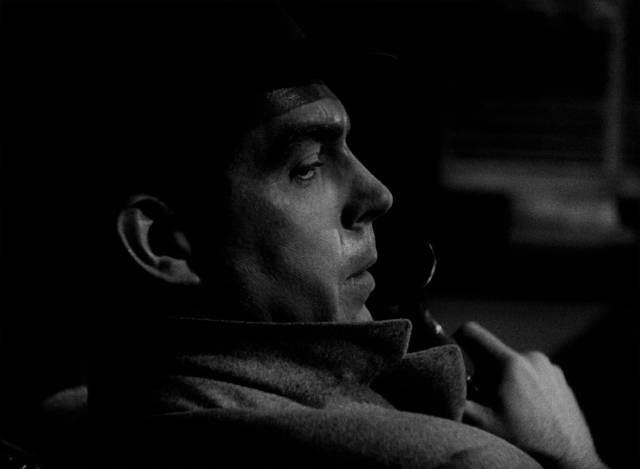
Among the older movies I’ve been revisiting recently are two favourites which, while very different from one another, both embody the anxieties which beset traditional masculine certainties in the years following World War Two.
War, by its nature, highlights certain human characteristics which exist in shades of gray at other times. Socially sanctioned aggression and violence create a context for the expression of conventional concepts of masculinity, pushed to extremes which become problematic when carried back to civil society. Identities forged in the hyper-male world of the military and its most extreme expression, combat, do not fit comfortably in a peacetime environment, more generally defined by work and family. A confluence of factors – a decade of insecurity in the Depression, the flourishing of mass entertainment in radio, the movies, and nascent television, the emerging understanding of psychology – threw these issues into sharper relief during and after the protracted experience of World War Two and one of its clearest expressions can be seen in film noir.
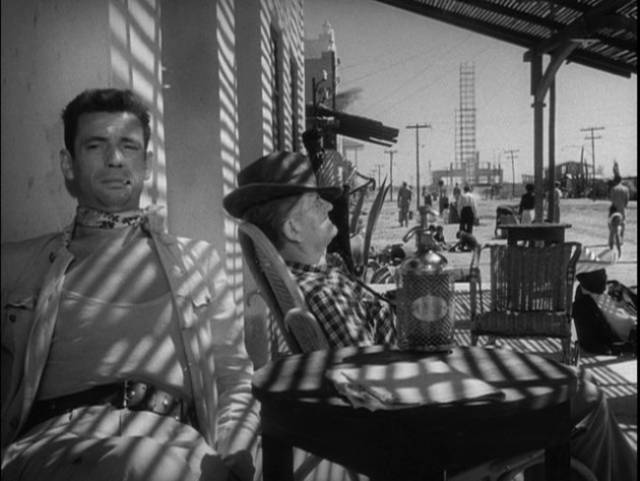
Emerging in the mid-1940s, there was a clear difference between noir and its most obvious precursor, the gangster movie. In that Depression era genre, protagonists waged war against society in pursuit of wealth and power – the underpinnings of that conflict became clearer as time passed, rooted in class conflict and Capitalism; in noir, however, protagonists were more often embedded in society rather than in direct conflict with it, but pushed to the margins. The driving force of these characters’ transgressions is a sense of displacement, of being barred access to what an affluent society defines as the purpose of the individual under Capitalism. Noir stories are propelled by the insecurity and resentment of men who returned from the paradoxical physical and psychological certainties of war, where roles were clearly defined and personal survival depended on individual action within a mutually supportive brotherhood. Back in the civilian world, these men were forced into conflict with one another as they competed for resources.
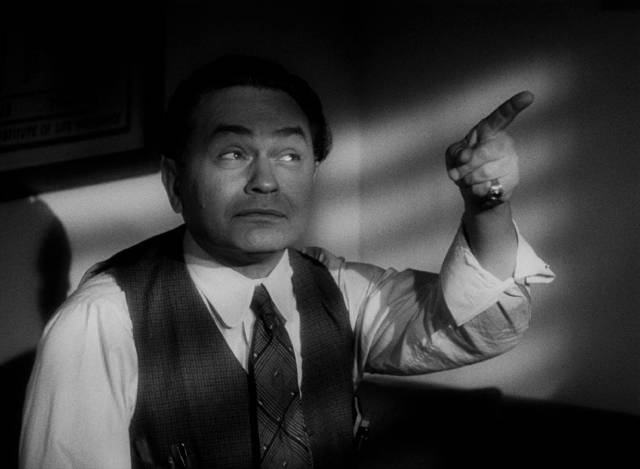
More than in any previous war, there was an additional change which amplified this masculine insecurity; the complete mobilization of society changed the traditional role of women. The industrial scale of the war required a hugely expanded home front workforce, but with men off fighting it was necessary for women to assume the new role of worker, in the process gaining a sense of independence seldom experienced before. With money and responsibilities of their own, women weren’t amenable to being forced back into traditional roles, and their resistance only emphasized the loss of authority felt by men returning from the war. A corollary to the male insecurity inherent in noir is the idea of female danger – many a noir protagonist is destroyed by a femme fatale he is no longer able to control or even understand.
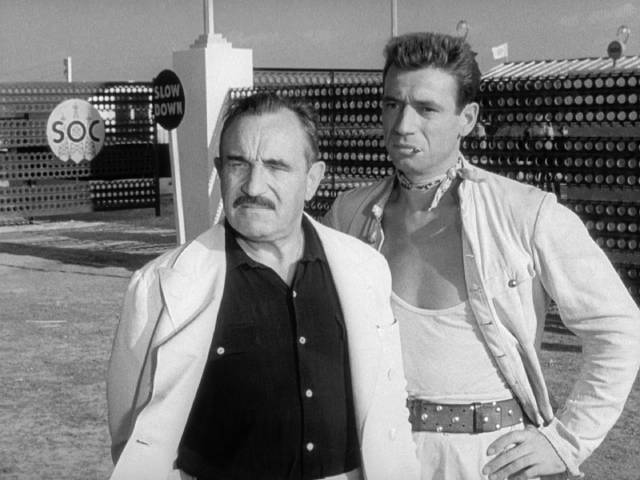
While John Huston’s The Maltese Falcon (1941) is widely considered one of, if not the first true film noir, it still belongs to the hard-boiled detective genre which became popular in the ’30s. There was an obvious connection between that genre and the noir which emerged a few years later, but more often noir centred on ordinary men rather than professionals who made a living dealing with crime – and by no means can Sam Spade be seen as driven by uncertainty about his masculine authority. The lines are fairly blurred, but it’s arguable that the movie which most clearly embodied the key elements of noir and laid the groundwork for what followed in the post-war decade appeared four years later: Billy Wilder’s Double Indemnity (1944).
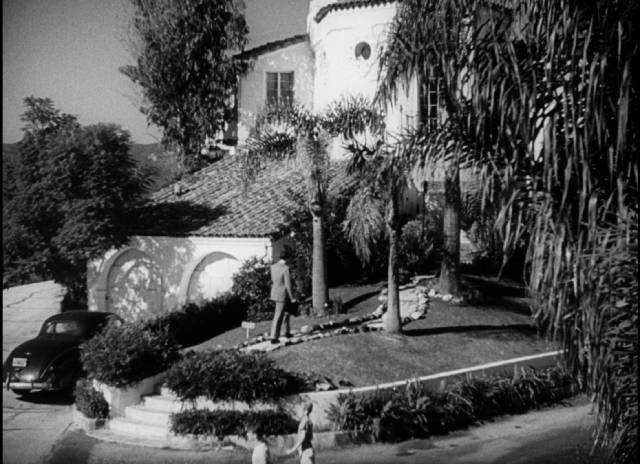
Double Indemnity (Billy Wilder, 1944)
Billy Wilder had been a prolific screenwriter in Germany and, after leaving when the Nazis rose to power, France before landing in Hollywood in the late 1930s. He quickly adapted to his new environment and became a very successful writer of comedies, in partnership with Charles Brackett, getting the first of many Oscar nominations for the script of Ninotchka (Ernst Lubitsch, 1939). While fellow emigre Fritz Lang always retained a touch of the European in his Hollywood movies, Wilder had a chameleon-like ability to immerse himself in his adopted society, viewing it with an incisive satirical and frequently cynical eye. Noted for his comedies, a strain of wicked humour even runs through many of his more dramatic features, but following his directorial debut (The Major and the Minor, 1942) and its follow-up (Five Graves to Cairo, 1943), he made the first of his very dark dissections of contemporary America – followed by The Lost Weekend (1945), Sunset Boulevard (1950), Ace in the Hole (1951) – and it remains the very definition of noir.
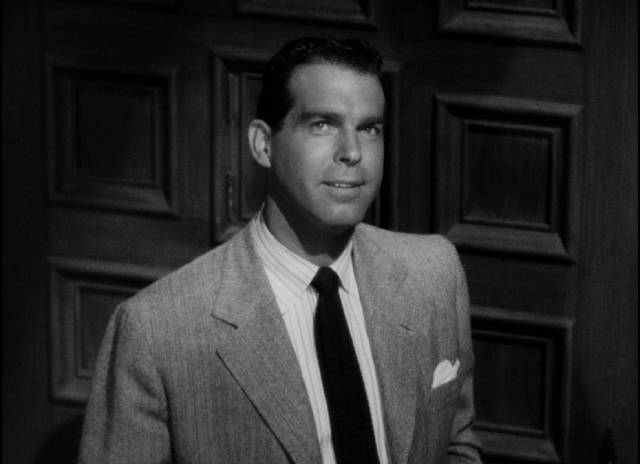
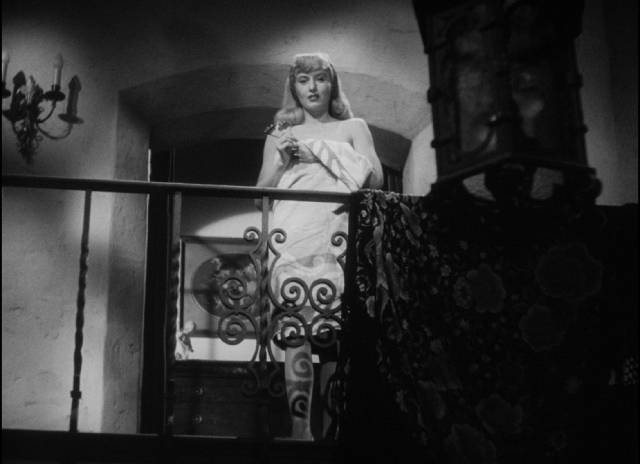
Scripted by Wilder and Raymond Chandler from a James M. Cain novel, Double Indemnity is the story of a man who believes he’s the master of his own fate, but is completely undone by a woman who turns out to be much smarter and far more manipulative than he is. Walter Neff (Fred MacMurray) is an investigator for an insurance company, a man who sells policies and does his best to make sure people can’t collect by proving that their claims are fraudulent. Capitalism is apparently based on selling a product or service which the company has no intention of providing. Much admired for his skills by his boss, Barton Keyes (Edward G. Robinson), Neff is morally ambiguous from the start so when he finds himself drawn into a plot to defraud his own company, he doesn’t have far to fall.
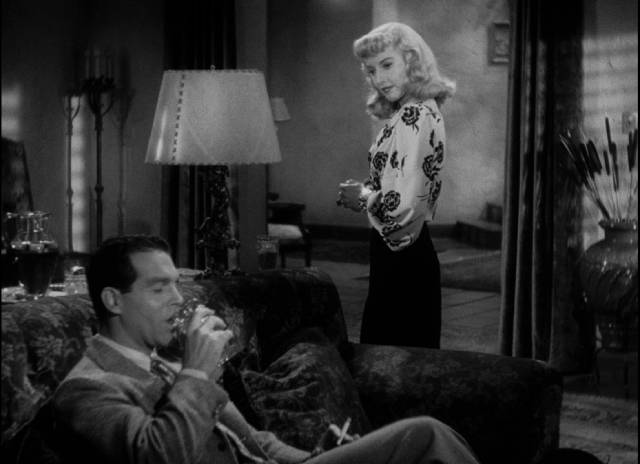
Visiting a client to renew an automobile insurance policy, he encounters Phyllis Dietrichson (Barbara Stanwyck) and his fate is sealed, although he believes himself to be the one in control. He first sees her at the top of the stairs wrapped in a towel, a seductive image of erotic promise. When she joins him downstairs he flirts but she remains cool as they discuss her husband’s policy. It’s on a later visit that she sounds him out about a life insurance policy for Mr. Dietrichson (Tom Powers) and whether she can take one out without her husband knowing – although she explains that this deception is necessary because he doesn’t believe in insurance, her true motive is all too clear and yet Neff is already too deeply attracted to back away. In fact, he devises the method for getting Dietrichson’s signature on the policy and even comes up with the scheme to double the payout by making sure the man dies in a train accident which qualifies for the double indemnity.
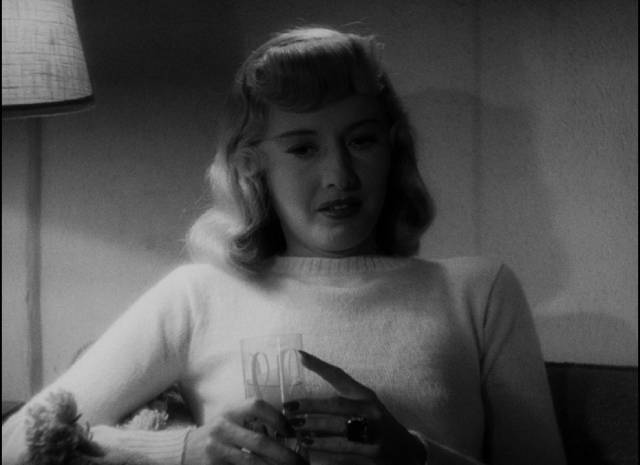
The ease with which Neff slides from ace insurance investigator to murderer shows how thin the line between upright citizen and criminal really is. All that matters to him is gaining access to the seductive Phyllis, but his certainty of his own dominant power blinds him to the fact that she is using him for her own ends, that she is actually in complete control of the situation and that every decision he has made and action he has taken has been determined by her. Masculine authority is a delusion which leads him to his own destruction.
What is interesting about the film’s structure is that it begins with Neff arriving at his office, wounded and in pain; he sits down and dictates the story to a recorder as he gradually bleeds to death. He’s already defeated, his plans a failure, so the image we see of him in the narrative is retrospective, his cocky self-assurance and apparent sexual appeal for Phyllis already known to be an illusion. Even facing death and trying to paint himself as in control, he can only reveal his weakness and susceptibility to the manipulation of a smart, sexually dominant woman. He might be wiser now, having learned that Phyllis was already grooming a younger man even as the gullible Neff fulfilled her murderous plan, but that wisdom comes at the price of knowing that his masculine confidence was a form of self-delusion.
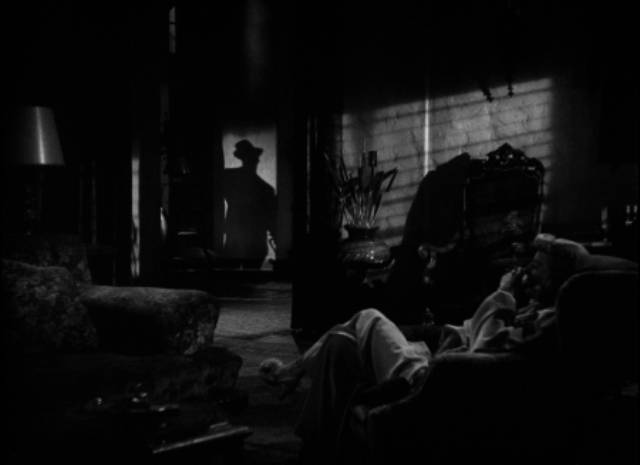
The corollary of this deconstruction of Neff’s masculine authority is the seductive delineation of female sexual power in Stanwyck’s Phyllis, a power which is so much stronger than the man’s that it affords only two options – submission or complete destruction. Her hold on Neff is so powerful that, unable to extricate himself, he can see no alternative but to kill her, but in that act he also destroys himself. Stanwyck was ideal casting; she had the ability to conceal a core of steely determination beneath a seductive softness which easily entraps men who are too sure of themselves. She had none of the brittleness of contemporaries like Bette Davis or Joan Crawford, that impression of warmth making her more dangerous in a movie like Double Indemnity but also more irresistible in comedies like The Lady Eve (1941) and Ball of Fire (1941), the latter coincidentally scripted by Wilder and Brackett.
In addition to the film’s thematic groundwork, Double Indemnity embodies noir in its visual style, John F. Seitz’s cinematography seeming to be drenched in shadow even in full daylight. As it progresses, the imagery gets darker, closing in around the characters to reflect their own moral descent. Once Neff meets Phyllis, his fate is sealed and the shadows grow deeper and more oppressive, an expression of noir’s fatalism. It’s a bleak and hopeless genre, a refutation of the individual’s free will.
*
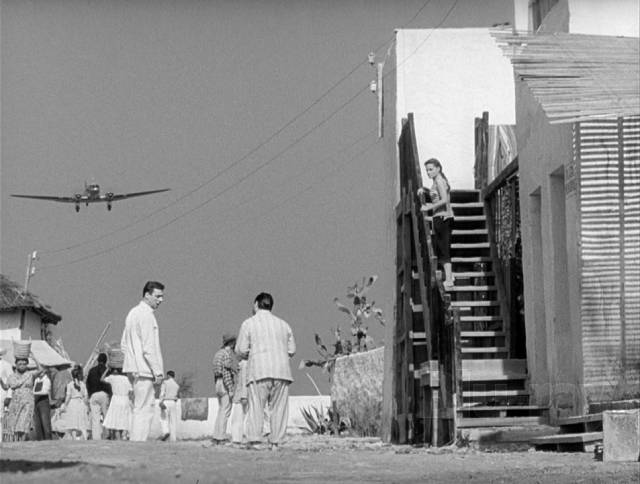
The Wages of Fear (Henri-Georges Clouzot, 1953)
It wasn’t only in noir that these post-war uncertainties revealed themselves. They appeared in many movies in many genres during the next decade – from William Wyler’s home-coming drama The Best Years of Our Lives (1946) to Don Siegel’s science fiction nightmare Invasion of the Body Snatchers (1956) and Jack Arnold’s The Incredible Shrinking Man (1957). Nor were they limited to Hollywood and American society. They can even be seen at the heart of Henri-Georges Clouzot’s grim adventure The Wages of Fear (1953).
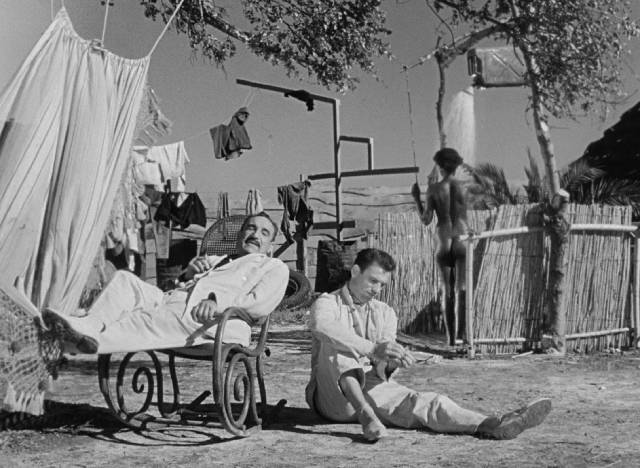
Adapted from a novel by Georges Arnaud, Clouzot’s film is an epic study in hopelessness and the desperate attempt by a group of men to prove themselves and regain a sense of self-worth. These men are stranded in a small town in South America, without the means to escape back to the world nor any prospect of earning a living where they are. They survive by begging, by cheating, by scraping by as best they can. But when an American oil company’s well explodes in flame, they are given a possible way out; all they have to do is drive truck-loads of nitroglycerine on dangerous roads through jungle and over mountains. With only a slim chance of success and little hope of survival, these men volunteer because if they manage not to die they will have enough money to go somewhere else – though what kind of life they might find elsewhere is uncertain, so escape may be just another illusion.
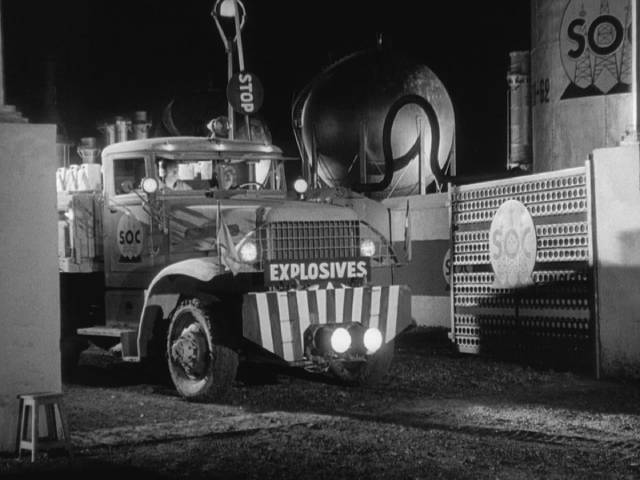
Clouzot takes his time, the long opening stretch establishing the hopelessness and boredom. These men are treated with contempt by the locals whose businesses they constantly try to take advantage of, countering that attitude with expressions of arrogance, trying to assert a superiority rooted in the fact that they come from elsewhere, from better places than this. When a new man arrives on the plane, dressed in an immaculate suit and radiating a sense of privilege, his manner immediately gains him credit at the local hotel and bar, and Mario (Yves Montand) quickly attaches himself, sensing someone who may offer a way out. Social standing is a matter of attitude and presentation and Mario’s fawning subservience amplifies the air of authority Monsieur Jo (Charles Vanel) exudes. Their relationship becomes the focus of the narrative.
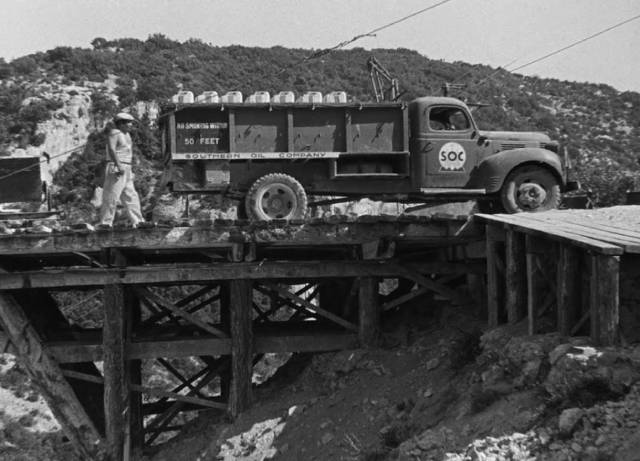
When potential drivers are tested, M. Jo is not chosen, but one of the “lucky” four doesn’t show up at departure time and there’s a suggestion that Jo has probably killed the man to take his place. However, Mario is happy to be partnered with Jo and the perilous journey begins. Clouzot and his cast manage to instill the simple act of driving with tension as the two trucks – the other manned by Bimba (Peter van Eyck) and Luigi (Folco Lulli) – make their way along the rough road running beside an oil pipeline. They initially deal with seemingly small challenges – gauging the correct speed to get over a rough stretch – but as the day drags on and the heat itself becomes a threat with the sun beating down on the exposed drums of explosive, obstacles loom increasingly larger.
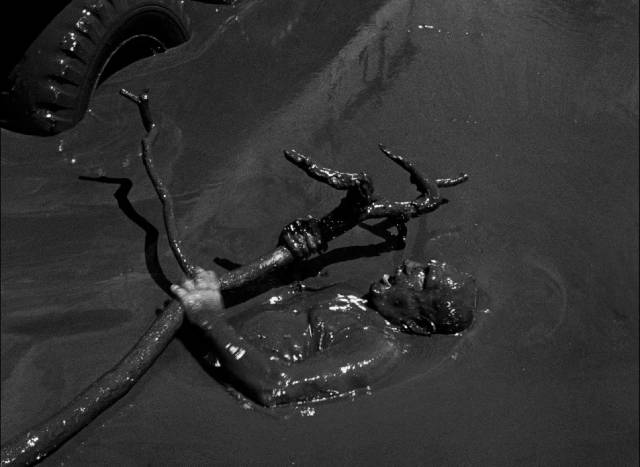
There’s the switchback which requires the trucks to back onto a rotting wooden platform over a ravine, and eventually, in the film’s grimmest sequence, the drive through a crater filling with oil from the ruptured pipeline. At each stage, Mario becomes more aware that the man he initially admired is a coward, all bluster; Jo is no better than the rest of them, perhaps worse because he can’t even be honest in the face of the danger they share. But despite the growing antagonism, what happens in that oil-filled crater brings Mario face to face with his own worst self, his ability to do something terrible when circumstances set him an impossible choice.
Risking their lives for what is almost certainly an illusory prize, these men are reduced to the most basic existential position; while their journey reveals certain immutable characteristics, in the end personality matters little. Survival is a purely physical challenge, presented by Clouzot with visceral brutality. The sheer mechanics of the job take precedence over everything else.
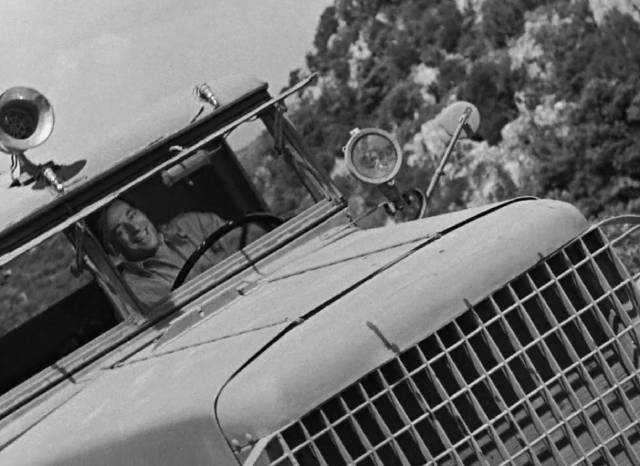
Wages of Fear is a gripping adventure, but even survival seems meaningless in the end. But the way that hopelessness is played out in the final moments has always annoyed me. Having lived and earned his money, Mario heads back over the mountains towards a rendezvous with Linda (Vera Clouzot), the woman who works at the hotel, and no doubt a flight out to some big city… but having survived makes him delirious and he drives the precarious road like an idiot, swinging the wheel from side to side until he drives over the edge and plunges into a ravine. I much prefer the ending of William Friedkin’s Sorcerer (1977), in which an inevitable fate catches up with Scanlon (Roy Scheider) at the moment his hope seems to be fulfilled; that unfairness is far more satisfying than Mario’s irritating stupidity. But otherwise, both films are excellent renditions of this narrative of masculine delusion and failure.
*
Criterion’s Blu-ray of Double Indemnity features a 4K from a 35mm fine-grain nitrate print, supplemented with a fine-grain safety print made in 1986. It’s a dark image with pronounced grain, a visual analogue for the murky moral universe of the story. The two-disk set includes an archival commentary from Richard Schickel, a new conversation between Eddie Muller and Imogen Sara Smith discussing what makes the film the definitive noir, a 2006 documentary about the making of the film, plus two radio adaptations. The second disk is devoted to Volker Schlöndorff’s three-part, three-hour interview with Billy Wilder from 1992.
The BFI Blu-ray of The Wages of Fear features a 4K restoration from the uncut French version, making it slightly longer than previous editions at 152-minutes. The black-and-white image is very film-like, with excellent contrast and natural grain texture. There’s a new commentary from critic Adrian Martin, archival interviews with assistant director Michel Romanoff and Clouzot biographer Marc Godin, plus a new talk from academic Lucy Mazdon, and a 99-minute conversation between Montand and Don Allen from 1989 covering the actor’s career.
Both releases are excellent showcases for these bleak classics.
Comments
Film noir is one of my favorite genres. I do have both of these films in my collection. I need to watch Wages of Fear again soon…
I really enjoyed your essay on the origins of film noir. I agree that the femme fetale narrative is an integral part of many noir films.
Back in the day when I actively collected laserdiscs, I had a soft spot for RKO Studio film noir releases. Often more of a low budget variety, they still appealed to me. Of course Citizen Kane was a monumental RKO release! The Val Lewton horror movies, like Cat People, were great RKO horror noirs.
Thanks again Kenneth for the wonderful reviews and essays. Every time I read them, I want to watch the movies there were under review!
I’ve been indulging in more noir recently thanks to a couple of box sets from Indicator – their fifth Columbia set, focused on Bogart movies, and the first set in a new line of Universal productions. Both definitely worth a look.